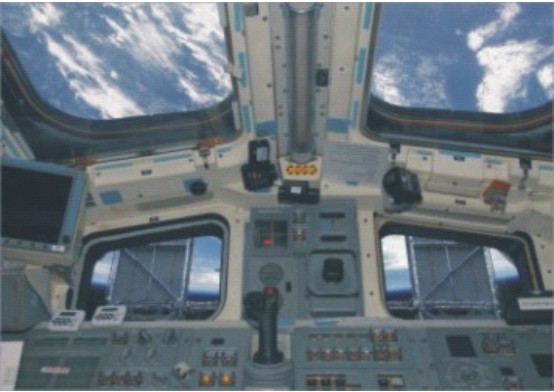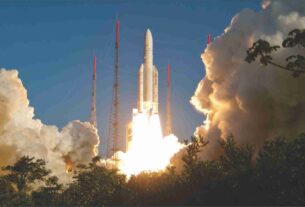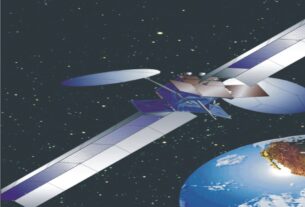For long, the fortunes of the Indian aerospace sector remained closely tied to the state owned defence and aeronautical major Hindustan Aeronautics Limited (HAL).
However, the opening up of the defence and aerospace sectors to private participation in 2001 meant a certain loosening of HAL’s monopoly over the Indian aerospace sector.
With many private players entering the far from mature Indian aerospace sector, HAL could no longer remain a “shaker and mover “of the Indian aerospace sector.
The conspicuous failure of HAL to meet the needs of IAF, considered its biggest customer, on time, has put this Indian aerospace entity in poor light.
Similarly, the glaring failure of the HAL over the years to give a required direction and momentum to the Indian aerospace sector was the major reason why India, while making rapid strides in space exploration and IT and software services industries, remained a laggard in this vital sector of great strategic importance to the country.
Poor performance
Incidentally, the failure of HAL to turn India into a forward looking aerospace hub of global standing has been attributed to the rigid control it was subjected to by the short sighted defence set up of the country obsessed more with meeting the immediate needs of the defence forces than nurturing the in house design skill and technological growth.
Rampant bureaucratic and political interference also contributed to stunning failure of HAL in terms of evolving and building an indigenous programme for aircraft design, development and production.
Moreover, the exclusion of civilian aeronautics that has many things in common with defence aerospace made HAL poor performer in all respects.
Not surprisingly than HAL could not notch up the distinction of becoming an Indian Embraer.
That India’s first civilian multi-role transport aircraft Saras designed and developed by the Bangalore based National Aerospace Laboratories(NAL) is yet to develop wings reflects poorly on the Indian aerospace capabilities.
On the other hand, the monopoly of HAL over the defence order resulted in this public sector giant developing a sense of complacency and lethargy with serious consequences for its multi dimensional growth.
And this in part explains why the domestic sales of HAL have been on a steady upward spiral while its track record on the export front has been far from impressive. Slippages in delivery schedule continue to be the Achilles heel of HAL.
Though HAL owes its origin to the Hindustan Aircraft Company set up at Bangalore way back in 1940s by the visionary entrepreneur Seth Walchand Hirachnad, the progress of this leading Asian aerospace company over the years in terms of building up a solid indigenous “human expertise base and technological infrastructure” good enough to design, develop and produce a range of civilian and combat aircraft has been nothing but dismal.
Clearly, there is no denying the fact that the route of licensed production that HAL embraced with great flourish contributed to the withering of the human talent it had in abundance for charting out a self-reliant programme for aircraft design and development.
Meanwhile, the Government of India’s decision to disinvest 10 per cent of its stake in HAL with a follow up plan to restructure the company is considered just a “cosmetic step” bereft of any substantial stuff for changing the fortunes of HAL.
Whether the proposed corporatisation of HAL will help it become globally competitive aerospace enterprise, no one is sure as yet. And this implies that India would need to look beyond HAL to sustain the growth of its aerospace sector.
Indeed, a study by Confederation of Indian Industry (CII), points out that Indian aerospace industry is now on the threshold of entering into a new era where it will assume greater responsibility for making the nation self reliant in many aspects of defence production.
The CII study on India’s aerospace sector reveals that India is poised to become large commercial and defence aerospace market on the back of massive import of fighter and transport aircraft of varying categories.
Global aircraft major Boeing on its part forecasts a demand of between 900-1000 commercial aircraft worth more than US$100-billion for India over the next twenty years.
Similarly, massive acquisition of a range of military aircraft and associated systems to bolster India’s defence preparedness is considered one more development that has a potential to boost the Indian aerospace sector.
Aerospace industry
Against this backdrop, the rapid growth of the Indian aerospace industry has attracted major global aerospace players to India for outsourcing a part of their requirements.
By all means, all segments in the aerospace industry, including civil and military aviation as well as space are showing significant levels of growth.
Additionally, the globalisation of MRO services has opened up opportunities for India to be positioned as a major regional MRO hub.IT industry body National Association of Software And Services Companies (NASSCOM) estimates that the country’s aerospace services industry would touch US$4.2 billion by 2020.
Meanwhile, aerospace and defence SEZs are being projected as a catalyst for the growth of the Indian aeronautical sector.
To support its growth on the back of the global aerospace firms increasingly outsourcing their work to India, the India’s first and fully functional aerospace focussed SEZ (Special Economic Zone) set up at Hattargi village near to Belgaum in North Karnataka by the Bangalore based aerospace engineering and precision manufacturing enterprise QuEST Global, is now ramping up its human resources base and infrastructure in a big way.
QuEST Global, which had a revenue of US$170-million in 2011- 12, is aiming for a robust growth in terms of revenue, manpower, facilities as well as new products and services.
“We have targeted a revenue mandate of US$500 million from engineering services by 2015. Engineering services and integrated assemblies for global aerospace OEMs (Original Equipment Manufacturer) will be the key focus area for us,” says Aravind Melligeri, Co founder and Chairman of the QuEST Global which had invested Rs.2000-million to set up the 300-acre SEZ in Belgaum.
The vision of Melligeri is to bring to the Indian aerospace sector, “capabilities and expertise” that are either non-existent or difficult to come by within the country.
Aerospace SEZ
Further into the future, this aerospace SEZ looks at engineering the entire integrated systems for the global aerospace OEMs.
Melligeri is clear that expanding the portfolios of services and products offered by SEZ would be realized through the route of joint ventures. Of course, he is not averse to acquisitions if some good opportunities come by.
And in the year ahead, QuEST Global SEZ is all set to blossom into a full fledged aerospace precision engineering and manufacturing supply chain ecosystem where-in customers can source their wide ranging requirements at one central point by avoiding the hassle of working and interacting with a range of vendors situated in various locations.
Incidentally, a sheet metal manufacturing and precision manufacturing facility, along with engineering services division formed the nucleus around which the Hattargi aerospace SEZ was organised.
Hattargi was chosen because of its strategic location and low cost of land and infrastructure as well as easy and abundant availability of power.
Moreover, the area around this aerospace SEZ boasted of more than foundries. Added to that, location of this SEZ at a distance of around 500-kms each from Bangalore, Mumbai and Hyderabad was an advantageous factor.
Melligeri elaborates that the striking advantage of having players across the value chain in the same location as in the Hattargi aerospace SEZ would be the amount of time saved in moving parts from one location to another as well as associated cost of logistics.
Eventually, it is planned to develop this aerospace SEZ into a one stop shop offering design to build services – right from the concept design to finished product – and provide entire range of technological support and services that are unique to the aerospace sector.
“We are talking to materials warehouse folks to create their ware-houses inside the SEZ and also third party logistics people evaluate in setting up a shipment management facility,” points out Melligeri.
In 2011, QuEST Global acquired the engineering services division of the UK based GKN Aerospace for an undisclosed sum and entered into an agreement with the company to provide engineering skills and resources to GKN Aerospace’s long term growth strategy.
In another major development, in late 2012, QuEST Global entered into an agreement with the Swedish defence and aerospace major Saab to float a joint venture called Aero Assemblies India which is considered the first of its kind venture for Saab in India.
This new entity which will be located at Hattargi SEZ will focus on manufacturing and supplying assemblies for the technology intensive commercial aero structures market.
Saab is already into the business of manufacturing complex air frame assemblies for global aircraft OEMs.
“We anticipate increased production rates during the coming years. This partnership will provide a cost efficient and reliable source of assemblies, acting as a complement to Saab’s in house manufacturing” says Lars Jensen, Vice President (Finance and Programmes) of the aero-structures unit of Saab.
Joint venture
This joint venture will provide quickening impetus to the plan of QuEST Global to set up a centre of excellence for aero structures.
While QuEST will hold 74 per cent stake in this joint venture, Saab will hold a 26 per cent stake. According to Melligeri, the partnership between the two companies will see knowledge transfer to capability building for assembly, tooling, material and supply chain as well as technical training for assemblies and sub-assemblies.
“This joint venture with Saab is a clear indication of our impetus in aerospace sector and promises to go a long way in enhancing our aerospace eco-system within SEZ at Belgaum,” says Melligeri.
Ultimately, this joint venture would help develop and supply entire integrated assemblies for aerospace majors. “India is a very important emerging market and to bring value to customers, it is very important to be here,” said Kjell Johnson, head of the aero structures unit of Saab.
According to aerospace industry analysts, such aerospace joint ventures provide a pointer to the growing competence of India is an area in which country had so far lagged behind.
According to QuEST Global, the facility will be developed through 2013 and the unit will initially become operational with 50 employees and is expected to ramp up to over 400 in the near future.
“The new entity has been established with a vision to develop a robust aerospace business that is focussed on build to print assemblies for the emerging market opportunities in India. In addition to this, its long term goal will be emerge as an independent unit that would become a cost effective solution provider of choice in the aero-structures assemblies,” says Melligeri.
Indeed, with this joint venture, QuEST Global has moved up the value chain – from being a supplier of components and sub assemblies to the provider of entire integrated assemblies to the aerospace sector.
The current strength of QuEST Global lies in aero structures and actuation systems. “Since our competence is in the realm of aerospace design and manufacturing, we have a distinct advantage over other players,” notes Melligeri.
QuEST Global aerospace SEZ is also looking at the possibility of entering the area of aero engine components production through the joint venture route.
The high point of QuEST Global aerospace SEZ is that it operators what is claimed to be India’s only surface treatment facility that provides approved high quality surface treatment for the aerospace and defence sector that it not readily available in India.
Aerospace Processing India (API) Private Limited, an independent third party facility established as a joint venture between Magellan Aerospace Corporation and QuEST Global, currently provides treatment services to a number of Indian defence and aerospace entities.
API is well positioned to provide metal finishing treatment services for both the Indian and global markets.
Among the sophisticated facilities forming part of API are fully automated anodising line, magnetic particle inspection line and a dedicated reverse osmosis plant, zero discharge effluent treatment plant and dedicated state of the art chemical laboratory to meet statutory testing requirement in house.
In keeping with QuEST Global’s philosophy of bringing in new capabilities to the Indian aerospace sector through the route of joint venture, a new forging enterprise called SQuAD Forgings India Private Limited has been floated.
This enterprise which is all set to become operational by early 2013 has been set up through the partnership of QuEST Global with Auber Duval SA of France and Setforge Societe Nouvelle, SAS, France.
It is a part of the cost efficient and self contained manufacturing eco system meant to meet the growing needs of the aerospace sector.
QuEST Global is today the only Indian private sector entity to manufacture components for the direct delivery to the European aircraft major Airbus Industries under a long term contract.
This is apart from MoU that Global QuEST had signed earlier with the Belgian aerospace entity SABCA for manufacturing metallic parts assembly work for the Airbus A 350 XWB flap track structure.
QuEST Global is also into the supply chain network of Boeing through Saab which was awarded a five year contract for the supply of machined and sheet metal parts of the Cargo Door Bay of Boeing-787 Dreamliner.
Mellgier says the strength of QuEST Global SEZ lies in the layout of the long term vision with short term goals that is realized in a systematic plan.
Among the customers of QuEST Global are Airbus Industries, Moog, Boeing, EADS, GE, GKN Aerospace, Hamilton Sundstrand, P&W, Rolls-Royce, and Siemens.
In the view of Melligeri, India’s well trained and abundantly available engineering work force, sharpening R&D(research and development) expertise as well as its strategic geographic location makes it an ideal aerospace hub.
Driving factors
There are several factors driving growth in manufacturing in India’s aerospace sector. These include strong economic growth that has resulted in rapidly growing domestic demand for civilian aircraft, the liberalisation of civil aviation policies, offset requirements, a strong domestic manufacturing base, cost advantage a well educated talented manpower pool, the ability to leverage IT competitiveness and liberal SEZ policies.
The setting up of this SEZ in a rural location by QuEST Global clearly demolishes the sedulously fostered myth that Bangalore alone can sustain the aerospace sector.
Indeed, as pointed out by Melligeri setting up an aerospace manufacturing facility in Bangalore is like setting up one in New York or London which in today’s time is a not a justifiable investment for any enterprise.
Indeed, with multiple tax benefits and incentives, locating aerospace facilities within an SEZ makes for immense economic sense.
An aerospace SEZ is in advantageous position to tap the price sensitive global aerospace market with a good degree of success.
Meanwhile, efforts being made to ease the norms governing SEZs in the country would benefit aerospace outfits planning to set up dedicated SEZs.
Melligeri drives home the point that the offset policy could be the major driver of the Indian aerospace sector.
The Indian defence procurement policy stipulates that any foreign defence contract whose worth is Rs 3000 million or more would entail an offset obligation of between 30-50 per cent of the total value of the contract.
The offset obligation can be discharged through the route of direct purchase, investment or technology transfer. An effective implementation of the offset policy can facilitate the absorption of new and innovative aeronautical technologies by the Indian industry.
Over the next one decade India would be spending more than US$100 billion on the acquisition of military hardware and aerospace systems.
In particular, Melligeri is gung ho about the offset that would flow to the Indian aerospace and defence industries from the finalization of the deal to acquire 126, medium, multi role combat aircraft (MMRCA) for which French Rafale has emerged as the winner.
Without going into specifics, Melligeri observed that QuEST Global too has signed offsets agreements. “India by creating the new requirements for direct offsets has opened up a large window of opportunity for Indian suppliers to harness these opportunities.”
Opportunities
“Every single government transaction in the realm of defence and aerospace is going to create more opportunities for us and other players in the market. But the challenge is in ensuring that the required capabilities and expertise are in place, along with capacities essential to meet the quality requirement of the customers. For this we need a robust domestic supply chain base,” remarks Melligeri.
Perhaps the biggest advantage of locating units and facilities catering to the aerospace sector within an SEZ is that it would help create an efficient supply chain cluster.
It is the synergy inherent in cluster phenomenon that enabled Wichita in USA and Toulouse in France mature into major aerospace hubs.
There is no reason why the Indian aerospace sector can not take a leaf out of this experience to build a robust and globally competitive aeronautical enterprise centred round supply chain clusters.
Rightly and appropriately, Melligeri points out that aerospace focussed SEZ with a thrust on building an ecosystem can act as a cluster of supplies and help leverage market opportunities through consortium formation to build vertically integrated solutions to customers.
But the catch is that India lacks in depth knowledge of cutting edge manufacturing technology in aerospace thereby implying that the county would need to acquire the required skill in this high technology area.
Similarly, India lacks in trained manpower pool possessing understanding of aerospace manufacturing and assembly processes that match the cycle times of western benchmark.
Moreover, the scale of operations required for development in aerospace is quite large and hence the industry depends on the Government for infrastructure development and R&D.
This dependence carries with it risks, as spending is subject to political process. Hence it is one of the toughest markets to tap.
But then as things stand not even the sky seems to be the limit in so far as the business opportunities ahead of the Indian aerospace sector is concerned.





